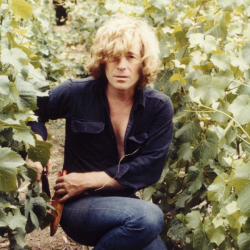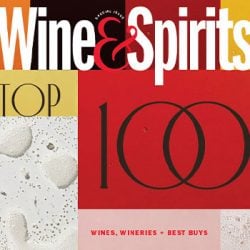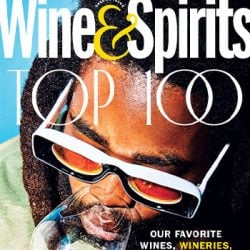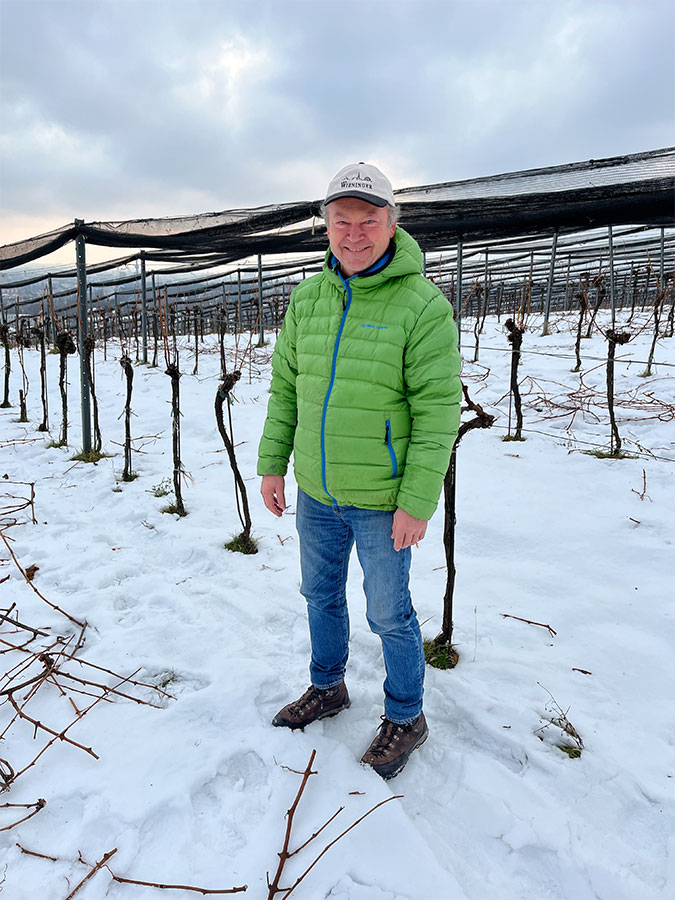

“I believe in old vines,” says Fritz Wieninger at his vineyards overlooking the Danube, at the northwestern edge of Vienna. “The root system is more intense, and the vine has the ability to get more ingredients into the wine. It may not be easy to measure, but it is easy to taste.” Wieninger specializes in Gemischter Satz, a local tradition now inscribed into law. Gemischter Satz, he explains, “must be a field blend from one vineyard with a minimum of three varieties, harvested all at once. You press it and ferment it in one tank.” Later, in the cellar, he can blend the tanks if he chooses.
Some of Wieninger’s parcels are completely mixed. In others, the varieties might have been planted in rows or in blocks, so they could be harvested separately. “Today, we pick them together, and when we interplant, we plant other varieties.” His experience at the Bisamberg vineyard convinced him that a random mix encourages “some kind of communication” among the plants. “At Bisamberg, we have pinot blanc, chardonnay and pinot gris. On the pinot blanc, I see violet-colored berries, and think there is some influence of the pinot gris that helps at the flowering of the pinot blanc.”
Wieninger is a quiet soul with a remarkable sense of openness. He recalls working in Napa Valley for Bill Harlan at Sunny St. Helena and smiles as we drive up to the top of the Nussberg, where three vineyard workers are pruning the vines at Ulm. The rows run vertically down the hill, with a view of the Danube and Vienna’s downtown. “When I heard this property was on the market, I came to see it. I stopped my car. I did not get out of my car. I wanted this. Still, when I think about it, my hair stands up on my arms.
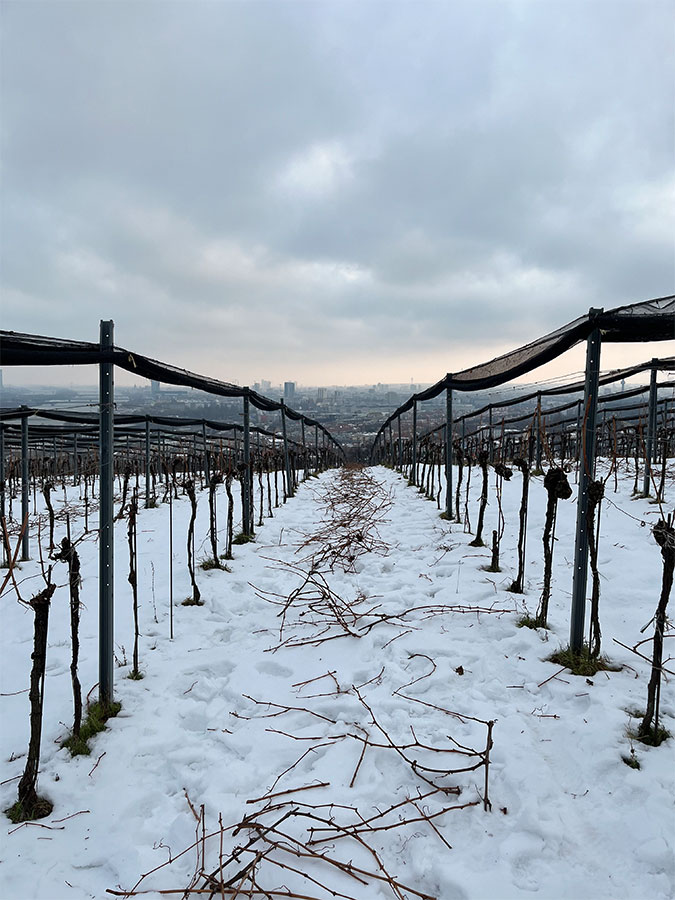

“I got out of the car and I felt like I could fall into the houses of Vienna.” For some growers, that urban proximity might be a challenge. Wieninger sees it as an opportunity. “In Vienna, there is always this connection between a million people and wine. A lot of traffic. Having the noise of the city is part of the terroir, like the microorganisms in the soil. The noise is a characteristic of the terroir.”
The vines were already mature when he took over in 1999 and are now more than 60 years old. Those old vines at Ulm changed his perception of the traditional Viennese field blends. “A wine like this, with its very intense character, showed me that Gemischter Satz could make a terroir-driven wine, that it could be high level, that it could be a noble wine.” The field blend includes pinot blanc, neuberger, welschriesling and grüner veltliner, with smaller proportions of sylvaner, zierfandler, rotgifler, traminer, and less than one percent of riesling. “It’s the red traminer—the Baroque style of traminer used in Vienna. It is very mature at the time of picking, so it lowers the acidity and raises the sugar content. It’s almost like adjusting the acidity in the riesling when you have the red traminer.”
The beauty and resonance of his 2021 Ulm is bookended by a completely different take on the terroir—the 2020 Gemischter Satz Natural under the Hajszan Neumann label, Wieninger’s second property and a separate winery Wieninger describes as his playground.
His friend Stephen Hajszan, a restaurateur and wine grower, had introduced Wieninger to biodynamics, another tool for the sustenance of old vines. Wieninger converted his first 12.5 acres of vines to biodynamics in 2006, began certification in 2008 and became a member of Respekt-Biodyn in 2009, the biodynamic association where he now serves on the board as treasurer. He recalls how Hajszan found himself too busy with two restaurants to tend to his collection of vineyards: “He and his financial partner, Neumann, decided to sell everything and he said, ‘You are the buyer.’” Wieninger now seems bemused by his own ready acquiescence. He took over 50 acres of biodynamic vineyards on the Nussberg, which he uses to make the Hajszan Neumann Gemischter Satz in a completely different style than his Wieninger wines.
Half of the grapes grow at Weissleiten, on the north side of the Nussberg, and half at Ulm. He leaves the wine for five months on the skins in 700-liter amphora, then gives it a light dose of sulfur at bottling. The wine was cold when he poured it, so I warmed it in my hands and it blossomed into a sunny, generous Viennese white, only getting more delicious and more complex with each taste.
Joshua Greene is the editor and publisher of Wine & Spirits magazine.
This is a W&S web exclusive. Get access to all of our feature stories by signing up today.


